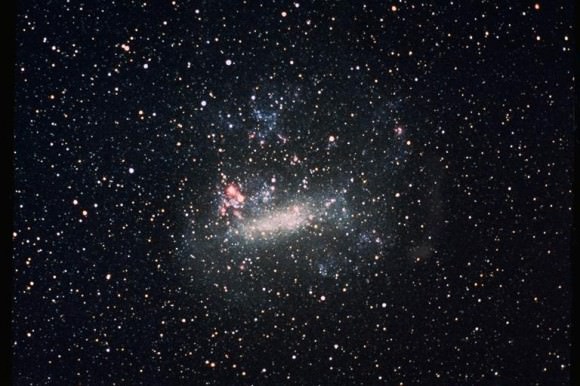OPT is a telescope and camera store in San Diego County, California, and our website, OPTTelescopes.com, is one of the most trusted online astronomy stores in the world. We've been around since 1947, and our employees are involved in various aspects of astronomy...from professional quality CCD imaging to writing books on what's up in the sky. We've got a lot to share, and this is where we will share it! Welcome!
Sunday, September 9, 2012
Weekly SkyWatcher's Forecast: September 10-16, 2012
Greetings, fellow SkyWatchers! With very little Moon to contend with this week, it will be a great time to take on some challenging studies like the Helix Nebula, Saturn Nebula, Stephen's Quintet and more. It's time to get out your big telescope and head for some dark skies... Because this week isn't for the beginner! Whenever you're ready, I'll see you out back...
Thursday, September 6, 2012
Eye Candy: ALMA Studies A Sweet Star!
Are you ready to take one sweet trip to the eye-candy shop? That's just what the Atacama Large Millimeter/submillimeter Array (ALMA) did when a team of astronomers discovered simple sugar molecules in the gas surrounding a young star. Similar to our Sun, the star cataloged as IRAS 16293-2422 and its sweet envelope herald the fact that the building blocks of life can be present when a solar system forms.
Monday, September 3, 2012
Weekly SkyWatcher's Forecast: September 3-9, 2012
Greetings, fellow SkyWatchers! With the change in seasons becoming quickly apparent, it's time to put some early hours dark skies to good use and enjoy some favorite nebulae. If you've enjoyed the Mars-mania, then you'll also enjoy the return of Mars in the pre-dawn hours. Speaking of early mornings, be sure to watch as the Moon and Jupiter head for a splendid conjunction this coming Saturday. When you're ready, grab your binoculars and set up your telescopes... It's time to dance!
Wednesday, August 29, 2012
Let's Send Neil Back To The Moon
 As a native-born and life-long resident of Ohio, I have lived in the shadow of Neil Armstrong all my life. I visit Wapokenta every few years for two simple reasons - I love the Armstrong Museum and I feel a need to pass that heritage on to children, grandchildren and visiting friends. Of course, I was crushed when I read of his death. I would have given anything to have had Armstrong's autograph on my original Apollo landing newspapers, or even just to have seen the man. He was a humble hero... and this is the quality that I loved most about him. However, Neil Armstrong and his quiet ways didn't just impact my life. He touched us all.
As a native-born and life-long resident of Ohio, I have lived in the shadow of Neil Armstrong all my life. I visit Wapokenta every few years for two simple reasons - I love the Armstrong Museum and I feel a need to pass that heritage on to children, grandchildren and visiting friends. Of course, I was crushed when I read of his death. I would have given anything to have had Armstrong's autograph on my original Apollo landing newspapers, or even just to have seen the man. He was a humble hero... and this is the quality that I loved most about him. However, Neil Armstrong and his quiet ways didn't just impact my life. He touched us all.
Monday, August 27, 2012
Blue Moon This Week
When you hear someone say “Once in a Blue Moon” you know what they mean. They’re usually talking about something rare, silly, and even absurd. After all, when was the last time you saw the Moon turn blue? Well, rare or not, we’re having one this week, and according to astronomer David Reneke writer and publicist for Australasian Science magazine, a Blue Moon is slated for the last day of this month, Friday, August 31.
Sunday, August 26, 2012
Weekly SkyWatcher's Forecast: August 27-September 2, 2012
Greetings, fellow SkyWatchers! If you only get your telescope or binoculars out once in a Blue Moon, then get them out this week when a Blue Moon actually happens! However, if you can't wait, then let's explore some great lunar features, bright star clusters and great double stars. When you're ready to learn some history, mystery and more, then just step on inside...
Friday, August 24, 2012
Star Consumes Its Planet
So far we've discovered a huge amount of planets orbiting a variety of stars, but this is the first time astronomers have uncovered evidence of a star devouring one of its offspring. When a planet comes up "missing", it's time to take a closer look at its parent star - in this case, a red giant older than the Sun and about eleven times bigger.
Monday, August 20, 2012
Weekly SkyWatcher's Forecast: August 20-26, 2012
Greetings, fellow SkyWatchers! It's going to be a great week to catch up on your lunar studies, but be sure to mark your calendar for Tuesday's splendid conjunction! There will be bright stars and clusters to study, so enjoy these temperate nights while they last! Whenever you're ready to learn more about the history, mystery and majesty of what's out there, meet me in the back yard...
Sunday, August 12, 2012
Weekly SkyWatcher's Forecast: August 13-19, 2012
Greetings, fellow SkyWatchers! Even if you missed the peak of the Perseid meteor shower, there will still be plenty of "strays" to sparkle this week's dark nights. For astronomy without a telescope, be sure to check out all the planetary alignments - and tell your friends! When you're ready to learn more about what to view and when this week, then meet me in the back yard...
Sunday, August 5, 2012
Weekly SkyWatcher's Forecast: August 6-12, 2012
Greetings, fellow SkyWatchers! While you start your observing week out by watching the Mars Curiosity Landing, be sure to step outside and view the Aquarid meteor shower, too! It's going to be a grand week for globular cluster studies and breezing along the Milky Way. Whenever you're ready to learn some more history, mystery and just plain fun things about the night sky, then meet me in the back yard...
Thursday, August 2, 2012
Swirling Along With NGC 1187
Discovered by Sir William Herschel in 1784, galaxy NGC 1187 floats along 60 million light-years away in the river Eridanus. It looks as peaceful as a cool, blue whirlpool... but, is all really quiet? Not hardly. This nearly face-on spiral galaxy is home to some very violent action - like two major supernova events in the last thirty years. Now, thanks to ESO’s Very Large Telescope, we're able to examine all of its facets in one of the most detailed photographs ever taken.
Tuesday, July 31, 2012
Weekly SkyWatcher's Forecast: July 30 - August 5, 2012
Greetings, fellow SkyWatchers! It's big. It's bright. There's no escaping it. This week the Moon will be our major point of study, but don't rule out some bright globular clusters and interesting stars! There's plenty of history and science to explore, too. Whenever you're ready, just meet me in the back yard...
Sunday, July 22, 2012
Weekly SkyWatcher's Forecast: July 23-29, 2012
Greetings, fellow SkyWatchers! Are you ready for a week filled with alternative astronomical observing studies? If so, you'll enjoy looking at some unusual stars and star clusters. If you want to keep things cool, then come along as we mine for lunar ice. Feeling a bit more lazy? Then kick back and enjoy the Delta Aquarid meteor shower or just step out after sunset and enjoy a splendid conjunction! It's all here... Just head outside!
Thursday, July 19, 2012
Titan's Seasons Do The Twist
"You should see my little Sis. She really knows how to rock. She knows how to twist!" And so does a vortex which has appeared at the southern pole of Saturn's moon, Titan. It's a sign that the seasons are changing! Thanks to images taken with NASA's Cassini spacecraft, we're able to join in the dance.
Sunday, July 15, 2012
Weekly SkyWatcher's Forecast: July 16-22, 2012
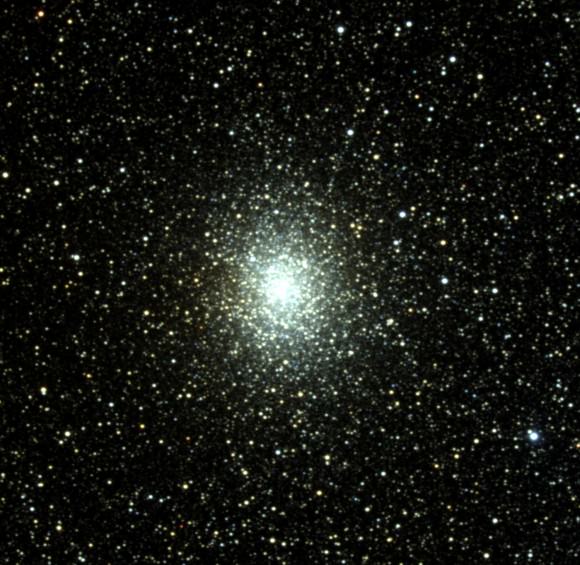
Greetings, fellow SkyWatchers! My satellite dish and internet connection has now returned from the land of Oz. While it was great to have a span of days where no electric meant no annoying lights, it also meant creative cooking excursions on the gas grill in 100 degree weather. Ah, well... the things we do for dark skies! This is New Moon week, so get out there and enjoy the Milky Way! Whenever you're ready, meet me in the back yard...
Wednesday, July 11, 2012
Hubble Reveals Fifth Moon Of Pluto
Through the incredible eye of NASA’s Hubble Space Telescope, a team of astronomers have announced the revelation of a another moon orbiting the icy dwarf planet Pluto. The moon is incredibly tiny - only about 6 to 15 miles in diameter - and irregularly shaped. It would appear to be in a 58,000 mile diameter orbit around Pluto and assumed to be co-planar with the other satellites in the system. This brings the known number of moons orbiting Pluto to five. How exciting is that?!
Monday, June 25, 2012
Weekly SkyWatcher's Forecast: June 25 - July 1, 2012
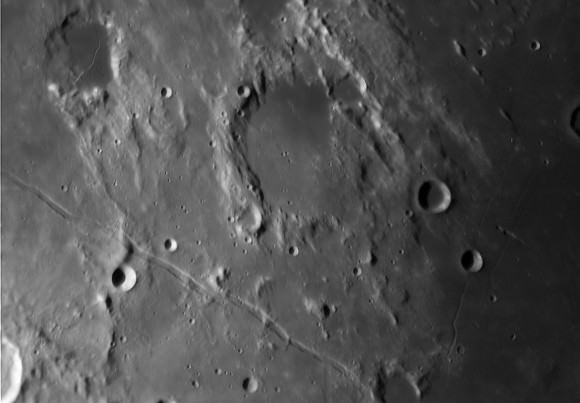
Greetings, fellow SkyWatchers! What a great week to enjoy lunar features! We'll celebrate many famous birthdays - including Charles Messier - and take on challenging double stars. If you're in the mood to just kick back in a lawn chair and enjoy, then check out the June Draconid meteor shower. (sssssh... it may have been responsible for the Tunguska Blast!) Still more? Then keep an eye on the western horizon, because Mercury is about to become a "guest star" in the Beehive Cluster! When ever you're ready, just meet me in the back yard...
Friday, June 22, 2012
NuSTAR Reveals The Universe In X-Rays

An Orbital Sciences technician completes final checks of NASA's NuSTAR inside the Orbital Sciences processing facility at Vandenberg Air Force Base.
Over a century ago, Wilhelm Rontgen made an amazing discovery - X-rays. Never in his wildest dreams could he ever have imagined the many uses this form of electromagnetic radiation would have inspired. It has evolved from basic medical uses to the furthest reaches of outer space. Now an orbiting NASA telescope has been launched and it will provide us a look at the Universe that we've never seen before. This new telescope was developed with help from researchers from SLAC National Accelerator Laboratory and Stanford’s main campus and the views it will provide will be hard. Hard X-rays!
Monday, June 18, 2012
Weekly SkyWatcher's Forecast: June 18-24, 2012
 Greetings, fellow SkyWatchers! Let's begin the week with some awesome galactic studies and enjoy a meteor shower during Summer Solstice! We'll be studying variable stars, the planet Mars, Saturn, the Moon and Mercury, too! There's always a bit of astronomy history and some unusual things to learn about. When you're ready, just meet me in the back yard...
Greetings, fellow SkyWatchers! Let's begin the week with some awesome galactic studies and enjoy a meteor shower during Summer Solstice! We'll be studying variable stars, the planet Mars, Saturn, the Moon and Mercury, too! There's always a bit of astronomy history and some unusual things to learn about. When you're ready, just meet me in the back yard...
Monday, June 11, 2012
Weekly SkyWatcher's Forecast: June 11-17, 2012
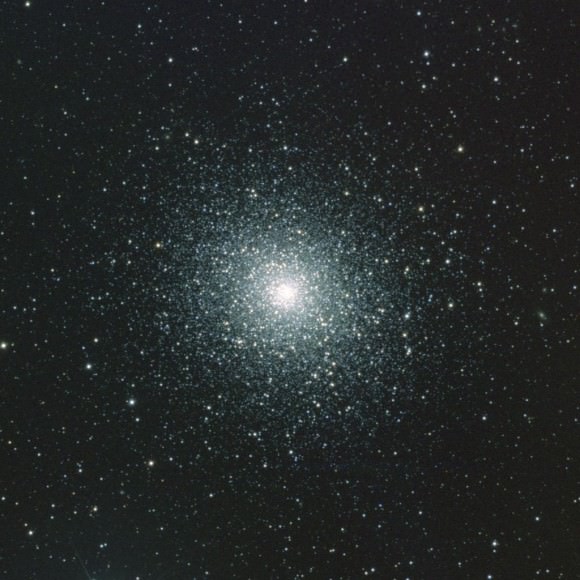
Greetings, fellow SkyWatchers! You can breathe now... the Venus Transit is over and we're back to the mundane astronomical excitement like great globular clusters, an early morning conjunction and two meteor showers - the Ophiuchids and June Lyrids. If you're up to the ordinary, then follow along as we capture some great galaxies and a very challenging study! Dust off your optics and meet me in the back yard...
Sunday, June 3, 2012
Weekly SkyWatcher's Forecast: June 4-10, 2012
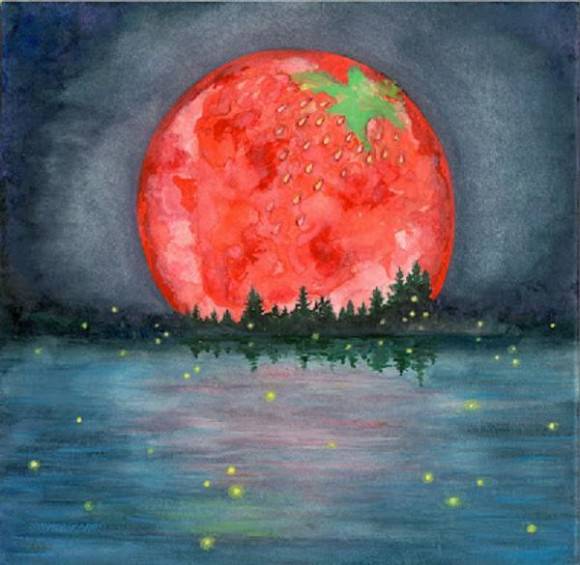
Greeting, fellow SkyWatchers! It's gonna' be a great week! We start off with a partial lunar eclipse of the Strawberry Moon, head into the historic Venus Transit, study some Herschel objects, catch both the Scorpid and Arietid Meteor Showers, practice some binocular astronomy and even take on some challenge objects! How awesome is that? Whenever you're ready, just follow me into the back yard...
Wednesday, May 30, 2012
Trees Talk To Satellites
If no one is in the forest, can you hear a tree fall? The answer is yes. Thanks to satellite communications, the forest industry is taking a whole new stand on how it harvests trees. Currently in the testing phase, this new method from the ESA combines satcoms and cellular services to relay important information almost immediately so less trees are used to produce a higher rate of timber. Timber? Timber!
Tuesday, May 29, 2012
Weekly SkyWatcher's Forecast: May 28 - June 3, 2012
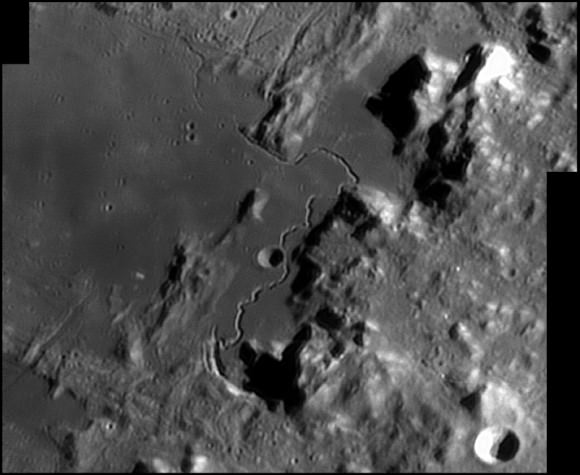
Hadley Rille - Credit: Damian Peach
Wednesday, May 23, 2012
Observing Alert - Supernova 2012cg Discovered In Virgo Galaxy NGC 4424
It's official. According to AAVSO Special Notice #283 compiled by Elizabeth O. Waagen, there's a brand new, shiny supernova out there... at an observable magnitude! According to data taken with LOSS and reported by M. Kandrashoff, S. B. Cenko, W. Li, and A. V. Filippenko, spectra indicates a Type 1a supernova event began on approximately May 17, 2012 and has continued to brighten.
Monday, May 21, 2012
Weekly SkyWatcher's Forecast: May 21-27, 2012

Greetings, fellow SkyWatchers! Here's hoping you had an opportunity to witness yesterday's eclipse! Even the partial phase here in Ohio was exciting... and to be able to watch virtually via live feeds was equally impressive! The week begins with dark skies and deep studies. Get up early to enjoy the apparition of Jupiter and Mercury just ahead of the rising Sun and check out Venus as it dances near the Earthshine Moon. When you're ready to observe, meet me in the back yard!
Monday, May 14, 2012
May 20th Annular Solar Eclipse - Time To Get Ready!
If you live in a corridor that stretches between north-central Texas and northern California, then you're in for a very special astronomical treat as the Sun will take part in an annular eclipse. However, don't count yourself out if you reside elsewhere. Most of central Mexico, the majority of the United States and Canada will still get a partial eclipse event. Want to know more? Then read on...
Sunday, May 13, 2012
Weekly SkyWatcher's Forecast: May 14-20, 2012

NGC 4565 - Credit: Palomar Observatory, courtesy of Caltech
Thursday, May 10, 2012
Lightning Strikes Twice For Planetary Atmospheric Research
Lightning lights up the Vehicle Assembly Building at NASA's Kennedy Space Center in Florida during thunderstorms on Monday, Sept. 27, 2010. Image Courtesy of Tom Moler
Sunday, May 6, 2012
Weekly SkyWatcher's Forecast - May 7-13, 2012

NGC 2903 - Credit: Palomar Observatory Courtesy of Caltech
Greetings, fellow SkyWatchers! With the Moon rising a bit later each night, it's time to begin the galaxy hunt once again! Keep an eye on Venus as it heads quickly towards the Sun and becomes more slender and brilliant each night. Don't forget about Mars and Saturn, too... They are both well-placed for early evening observing. When you're ready, meet me in the back yard...
Thursday, May 3, 2012
2012 Venus Transit - The Countdown Is On!
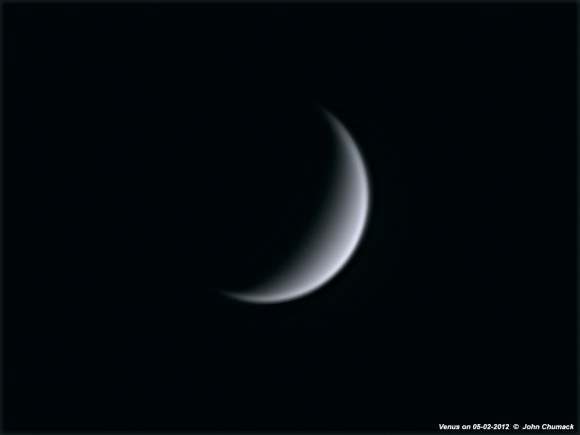
Venus 34 Days Before 2012 Transit - Credit: John Chumack
Head outside on any clear night this week and you won't be able to miss brilliant Venus decorating the western horizon. Right now it's surrounded by a host of bright winter stars like Capella, Betelgeuse, Aldebaran and the Pleiades. But, don't stop there. Use any type of optical aid and you'll see the planet is in the crescent phase right now and bigger than Jupiter in apparent size!
Sunday, April 29, 2012
Weekly SkyWatcher's Forecast: April 30-May 6, 2012
Wednesday, April 25, 2012
Dark Matter Theories Come Up Short

By studying the motion of the Milky Way's stars, researchers have learned there is not a lot of evidence for dark matter around the Sun. Current hypothesis have the solar neighborhood teeming with dark matter - an invisible enigma which is detected through its gravitational force. However, new research done by a team of astronomers in Chile have pointed out that the theories just don't match the facts. Chances are good that we'll never be able to directly detect dark matter particles with terrestrially based equipment.
Sunday, April 22, 2012
Weekly SkyWatcher's Forecast: April 23-29, 2012
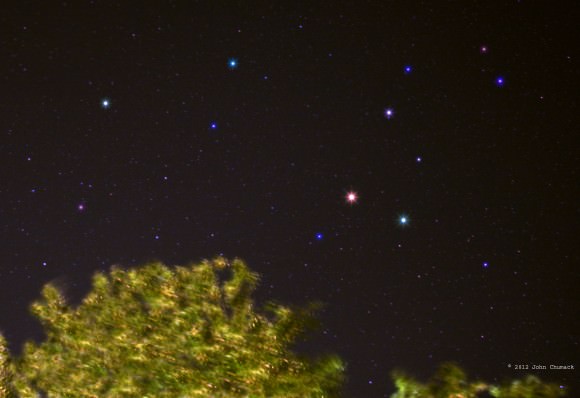
Greetings, fellow SkyWatchers! What a great week to just enjoy some great unaided eye astronomy observations. Who can resist the beautiful appearance of Mars in Leo? Also this week, you'll enjoy not one - but two - meteor showers as the Mu Virginids come to town mid-week and the Bootids light up the weekend. Get ready to enjoy bright stars, find planets, explore lunar features, learn some astronomy history and much more! When ever you're ready, meet me in the back yard...
Sunday, April 15, 2012
April 14-20, 2012 Designated As International Dark Sky Week

No matter where we live, both professional and amateur astronomers alike are keenly aware of light pollution and its affects. Not only does artificial lighting wash out the natural beauty of the starry night sky, it is responsible for environmental problems which can hamper everything from hatching sea turtles to migrating birds. Even though it’s a scary situation, it is one than can easily be solved by using common sense and shielded lighting. But how do we get people to become aware of the problem?
Saturday, April 14, 2012
Weekly SkyWatcher's Forecast - April 16-22, 2012

Greetings, fellow SkyWatchers! It's going to be a great - and dark - week to enjoy astronomy! We'll start off with an impressive galaxy for even small optics and enjoy two meteor shower. There's planets and planetary nebula to explore, as well as some awesome globular clusters. If you're in the mood, there's some history to learn and plenty of astronomy facts! Whenever you're ready, meet me in the back yard...
Wednesday, April 11, 2012
Not A Snowball’s Chance In Hell…

Over the last three decades astronomers have seen thousands of comets falling into the Sun. For the most part, they’re too small to survive a close approach – let alone re-emerge. It has only been within recent years that these icy travelers have been observed near the glaring Sun. Now a team of scientists led by Professor Emeritus John Brown, Astronomer Royal for Scotland and former Regius Professor of Astronomy at Glasgow University, have been able to pinpoint which ones are destroyed high above the solar atmosphere, which ones are annihilated just above the surface and which ones make it through their hellish journey.
Saturday, April 7, 2012
Weekly SkyWatcher's Forecast: April 9-15, 2012
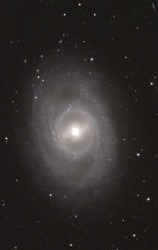 Greetings, fellow SkyWatchers! It's shaping up to be a great week to enjoy astronomy. For both hemispheres, the Virginid Meteor shower is underway and its peak occurs late Monday night / early Tuesday morning. Need more celestial fireworks? Then keep looking up as the "April Fireballs" will be visiting, with their peak beginning about a week from today and lasting for 24 days. Even if you only catch one of these bright travelers as they sparkle across the starry sky, it will make your night! But hang on, there will be plenty to explore. Bright stars and bright planets are featured - as well as some of the season's best galaxies. Keep your telescope out and don't get spooked, because the "Ghost of Jupiter" will be a challenge object! If you want to know more about astonomy history, and what you can see with just your eyes and your optics, then meet me in the back yard...
Greetings, fellow SkyWatchers! It's shaping up to be a great week to enjoy astronomy. For both hemispheres, the Virginid Meteor shower is underway and its peak occurs late Monday night / early Tuesday morning. Need more celestial fireworks? Then keep looking up as the "April Fireballs" will be visiting, with their peak beginning about a week from today and lasting for 24 days. Even if you only catch one of these bright travelers as they sparkle across the starry sky, it will make your night! But hang on, there will be plenty to explore. Bright stars and bright planets are featured - as well as some of the season's best galaxies. Keep your telescope out and don't get spooked, because the "Ghost of Jupiter" will be a challenge object! If you want to know more about astonomy history, and what you can see with just your eyes and your optics, then meet me in the back yard...
Thursday, April 5, 2012
Titanium Testing Reveals Moon Is Earth’s Baby

Even though it has been some four decades since the Apollo mission returned to Earth with their precious cargo of lunar soil and rock samples, these old samples are still teaching us new things. According to a recent study of Moon matter, the chemical signature blows away the common theory that the Moon was a product of a collision. According to the giant impactor scenario, the Moon may have formed when Earth and a hypothetical Mars-sized body referred to as “Theia” collided some 4.5 billion years ago. However, graduate student, Junjun Zhang of the University of Chicago, may prove otherwise. By analyzing the titanium content of lunar samples, Earth and meteorites, she speculates the Moon’s composition comes solely from Earth.
Sunday, April 1, 2012
Weekly SkyWatcher's Forecast: April 2-8, 2012
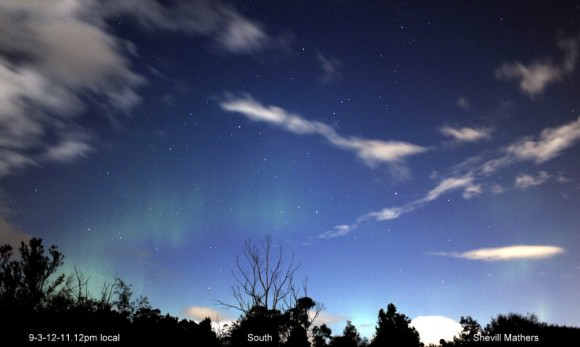
Greetings, fellow SkyWatchers! Despite the Moon, it will be a great week as the month of April opens with two meteor showers. The planetary action doesn't stop, because Venus is about to become a "guest star" in the Pleiades! Need more? Then know it's the right time of year to spot aurora - and to gather photons from bright star clusters! Get out your binoculars and telescopes and meet me in the back yard...
Thursday, March 29, 2012
San Diego Science Festival - 3/24/12 - PETCO Park
The day broke cloudy and gray, an inauspicious beginning to a day when OPT wanted to share viewing the sun with the 27,000 people who would attend the 4th annual San Diego Festival of Science and Engineering held at PetCo Park. We were already committed to the event so we hitched up our pants and soldiered on!
The Booth:
Penny and her “ah” team…Tanya, Rayna, Theresa, and Diana did a fantastic job of decorating the “double wide” booth and “womaning” the booth all day. We had solar beads and do it yourself sun dials (as you can tell, solar was the theme for OPT), to give away to the attendees of the festival. They helped make and gave away over 1300 solar bead bracelets….(I’m sure they must have had dreams/nightmares of them that night) and a like number of sun dials, to the delight of the crowd. They were tireless in their enthusiasm for the event. I can’t thank them enough.
The Solar Observing:
Captains Doug McFarland and Paul Cooper and their motley crew Ralph, Rod and myself, set up the solar scopes in hopes the sky would cooperate. We had a Coronado PST and a Lunt double stack 60 dedicated solar scopes on a iOptron Mini tower Pro, a Celestron 102mm with a 1000 Oaks white light filter and an Orion 80mm Refractor with a Coronado 40mm h-alpha filter on an Orion Atlas mount, and an 80mm Orion refractor with a 1000 Oaks white light filter and another Orion 80mm scope with a Coronado 40mm h-alpha filter on a Meade LXD55 mount. All the mounts were computer robotic and worked flawlessly all day, except when kids failed to heed our advice of “please don’t touch the telescope, just look through it”. Fortunately this didn’t happen too often.
Well, the sky cleared up enough to give us a view of the sun, but initially there was too much cloud cover to see any prominences. We were treated to a fairly rare solar event, at least in San Diego, a solar halo It was very cool!
Things were going great until the sun got eclipsed by one of the high-rises downtown about 2PM. Undaunted, we grabbed the scopes and mounts and hiked up to the top of a hill at the “park at the park “ at PETCO Park. Set them up again, and 20 minutes later we were viewing again. We were rewarded for our move by the sky clearing and the ability to see some solar activity…sun spots through the white light filters and solar prominences through the H-Alpha scopes….it was very exciting and quite the crowd pleaser! With the 6 scopes and the 5 guys manning them, I figure we were able to accommodate 10 people per minute, so in the almost 7 hours of viewing we were able to share our closest star with over 4000 people!
When 5PM finally arrived 10 very exhausted OPT employees broke down the booth and hand carried all the booth paraphernalia and solar observing equipment to the waiting vans.
Was it worth it? You bet!
Check out more photos from the event on our Facebook page.
Monday, March 26, 2012
Product Review: The TeleVue Plossl – Unsung Eyepiece Hero
 If you're into telescopy, then you know the name Televue needs little or no introduction at all. The name is absolutely synonymous with the most outstanding quality and high performance optics in the business and every product is backed by uncompromising standards. Of course, if you're like me, the moment I see the name Televue little dollar signs start swimming around in front of my eyes. Would you like me to shoo them away for you?
If you're into telescopy, then you know the name Televue needs little or no introduction at all. The name is absolutely synonymous with the most outstanding quality and high performance optics in the business and every product is backed by uncompromising standards. Of course, if you're like me, the moment I see the name Televue little dollar signs start swimming around in front of my eyes. Would you like me to shoo them away for you?
Saturday, March 24, 2012
Weekly SkyWatcher's Forecast - March 26 to April 1, 2012
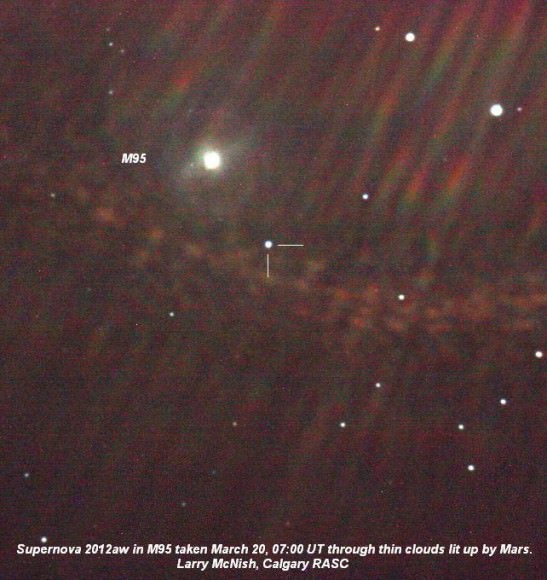
Greetings, fellow SkyWatchers! Have you been following the supernova in M95? Who would have ever believed Mars could be considered "light pollution"? Take advantage of darker skies and catch it now! It's another planetary showdown as the week begins with Jupiter, Venus, the Moon and the Pleiades lighting up the western twilight sky. Right now is an awesome time to study lunar features and to go asteroid hunting! Get out those telescopes and binoculars and I'll meet you in the back yard...
Wednesday, March 21, 2012
Speca – An Intriguing Look Into The Beginning Of A Black Hole Jet
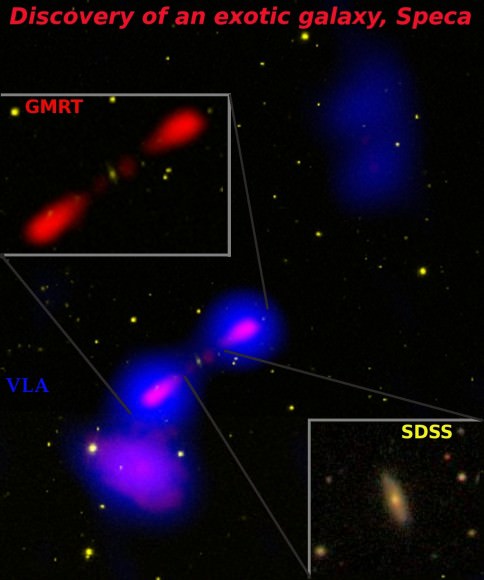
A unique galaxy, which holds clues to the evolution of galaxies billions of years ago, has now been discovered by an Indian-led international team of astronomers. The discovery, which will enable scientists to unearth new aspects about the formation of galaxies in the early universe, has been made using the Giant Meterwave Radio Telescope (GMRT) of the National Centre for Radio Astrophysics, Tata Institute of Fundamental Research (NCRA-TIFR). CREDIT: Hota et al., SDSS, NCRA-TIFR, NRAO/AUI/NSF
Its catalog number is NGC 3801, but its name is SPECA - a Spiral-host Episodic radio galaxy tracing Cluster Accretion. That's certainly a mouthful of words for this unusual galaxy, but there's a lot more going on here than just its name. “This is probably the most exotic galaxy with a black hole, ever seen. It has the potential to teach us new lessons about how galaxies and clusters of galaxies formed in the early Universe,” said Ananda Hota, of the Academia Sinica Institute of Astronomy and Astrophysics (ASIAA), in Taiwan and who discovered this exotic galaxy. "We find this merger-remnant early-type galaxy to have an intriguing spiral-wisp of young star forming regions."
Saturday, March 17, 2012
Weekly SkyWatcher's Forecast - March 19-25, 2012
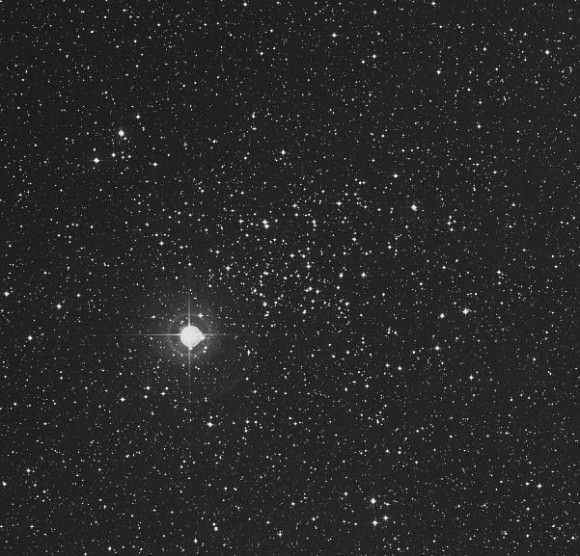
Greetings, fellow SkyWatchers! The week starts off with new Moon and the perfect opportunity to do a Messier Marathon. The planets continue to dazzle as we not only celebrate the Vernal Equinox, but the March Geminid meteor shower as well! If that doesn't get your pulsar racing - nothing will. It's time to get out your binoculars and telescopes and meet me in the backyard!
Wednesday, March 14, 2012
The Care And Feeding Of Teenage Galaxies… And By The Way, They Need Gas
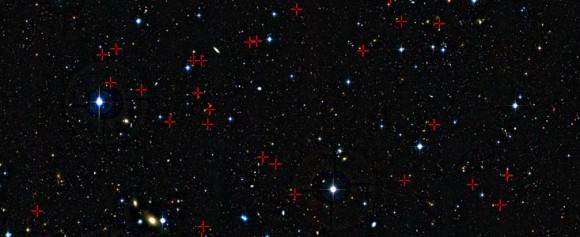
Got a teenager? Then you know the story. Go to look for your favorite bag of chips and they're gone. You eat one portion of meat and they need three. If you like those cookies, then you better have a darn good place to stash them. And, while you're at it, their car needs gas. Apparently there's a reason for the word "universal", because teenage galaxies aren't much different. Thanks to some new studies done by ESO’s Very Large Telescope, astronomers have been able to take a much closer look at adolescent galaxies and their "feeding habits" during their evolution. Some 3 to 5 billion years after the Big Bang they were happiest when just provided with gas, but later on they developed a voracious appetite... for smaller galaxies!
Sunday, March 11, 2012
Weekly SkyWatcher's Forecast - March 12-18, 2012
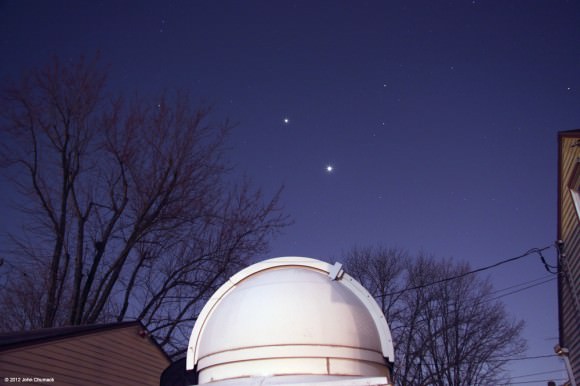
Greetings, fellow SkyWatchers! What an awesome display of planets! Please take the time to walk outdoors just after skydark - regardless of where you live - and enjoy the bright display of Venus and Jupiter! However, this isn't the only planetary action going on this week... Mars and M96 pair up, as well as Uranus and the Moon. There's even a Southern Hemisphere meteor shower to enjoy! Pretty exciting, huh? Join the party by getting out your binoculars or telescopes and meet me for more in the backyard...
Wednesday, March 7, 2012
OPT Named a DiversityBusiness Award-Winner
OPT has distinguished itself as one of the top small businesses in the country by being recognized among the 2 million companies registered in DiversityBusiness.com's directory in three categories; Top 500 Diversity Owned businesses in the United States, Top 500 privately held businesses in the United States, and Top 100 Diversity Owned businesses in California. For 12 years, DiversityBusiness.com has collected and compiled these lists on a state and national basis, and OPT is immensely proud to be included on them.
About DiversityBusiness: Launched in 1999, DiversityBusiness, with over 250,000 members, is the largest organization of diversity owned businesses throughout the United States that provide goods and services to Fortune 1000 companies, government agencies, and colleges and universities. DiversityBusiness provides research and data collection services for diversity including the "Top 50 Organizations for Multicultural Business Opportunities", "Top 500 Diversity Owned Companies in America", and others. Its research has been recognized and published by Forbes Magazine, Business Week and thousands of other print and internet publications. The site has gained national recognition and has won numerous awards for its content and design.
FourStar Service: Red Galaxy Cluster Hides In Plain Sight
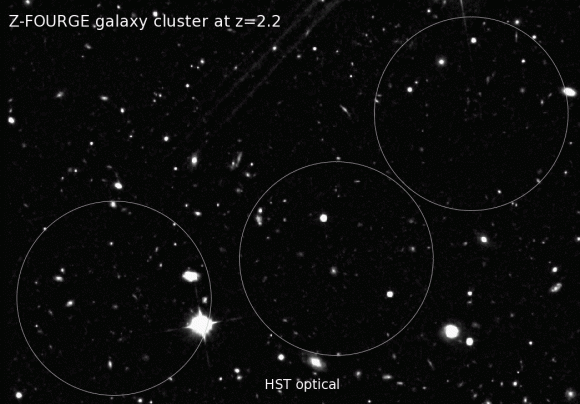
An infared image of the cluster. Three narrow slices of the infrared spectrum are represented in this color composite. The colors have been balanced to accentuate the red galaxies at a distance of 10.5 billion light years. Credit: FourStar Galaxy Evolution Survey ("Z-FOURGE") Click to open animation in a new window.
Located some 10.5 billion light years away in the general direction of the constellation of Leo, the most distant cluster of red galaxies so far discovered has been hiding in plain sight... until now. Thanks to the advanced observing techniques of FourStar, a new and powerful near-infrared camera on the 6.5m Magellan Baade Telescope, we're now able to peer beyond faint and into the realm of the faintest. It's 30 galaxies packed like sardines in a tin and their formation is the earliest known “galaxy city” in the Universe!
Sunday, March 4, 2012
Weekly SkyWatcher's Forecast: March 5-11, 2012
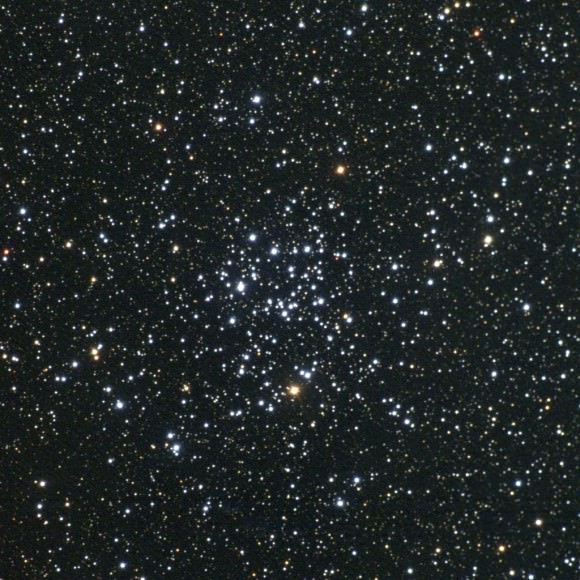
Greetings, fellow SkyWatchers! Our week begins with the dance of the planets and a gathering of asteroids. Keep watching as Mars makes its closest approach of the year - while Venus and Jupiter continue to get nearer. Celebrate the Full Worm Moon, interesting stars and beautful galaxies and clusters! Dust off those binoculars and telescopes and meet me in the backyard, because... Here's what's up!
Wednesday, February 29, 2012
Life in the Universe, Reflected by the Moon
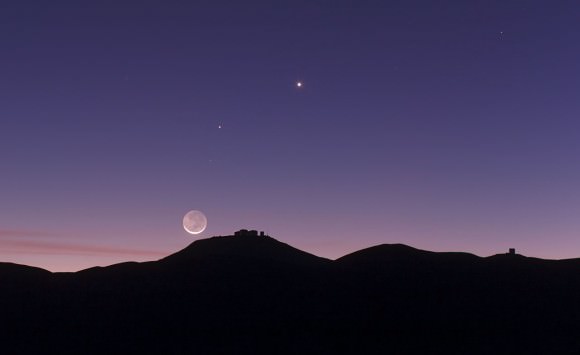
This view shows the thin crescent Moon setting over ESO’s Paranal Observatory in Chile. Credit: ESO/B. Tafreshi/TWAN
Earthshine – a poetic, fanciful word for the soft, faint glow on the Moon when the light from the Sun is reflected from the Earth's surface, onto the dark part of the Moon. And as unlikely as it might seem, astronomers have used Earthshine to verify there’s life in the Universe: Us. While we already know about life on our own world, this technique validates that faint light from distant worlds could also be used to find potential alien life.
“We used a trick called earthshine observation to look at the Earth as if it were an exoplanet,” said Michael Sterzik from the European Southern Observatory. “The Sun shines on the Earth and this light is reflected back to the surface of the Moon. The lunar surface acts as a giant mirror and reflects the Earth’s light back to us — and this is what we have observed with the VLT (Very Large Telescope).”


















